Sink or Swim: The Making of “The Deep”
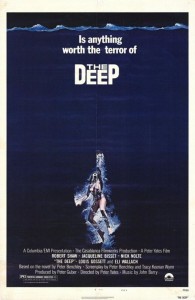 It was a case of throwing his money in the water, a multi-milion dollar motion picture budget in this instance.
It was a case of throwing his money in the water, a multi-milion dollar motion picture budget in this instance.
First-time producer Peter Guber, a former Columbia Pictures executive, had just launched his own independent production company.
He was looking for the sort of tent-pole project which would establish his reputation — and do what the industry calls boffo box office — in hyper-competitive Hollywood.
In the winter of 1975 Mr. Guber, then 34, found what he was looking for.
After reading the pre-publication galley proofs of “The Deep” — Peter Benchley’s follow-up novel to “Jaws”, a pop culture phenomenom both as a book and a movie — he engineered a $500,000 deal to acquire the film rights.
“I knew this was it,” Mr. Guber said later. ” … ‘The Deep’ was the story of a young couple honeymooning in Bermuda. They are swept up in a whirpool of danger and intrigue when exploring the shipwreck of ‘The Goliath’, a merchant ship sunk in a hurricane in 1943.
“They stumble headlong onto a long-hidden cache of illegal drugs. Lying beneath the iron wreck of the ‘Goliath’ is something else. David and Gail, our young newlyweds, discover a Spanish treasure so valuable as to defy logic. Theirs is the quest to uncover what is down in The Deep, why it’s there and get it up.
“In doing this, they are forced by circumstance into an unholy alliance with Romer Treece, a Bermudian treasure expert, recluse and living legend. ‘The Deep’ is the story of what they go after … and what goes after them.”
Mr. Guber shared the critical view that the novel lacked “the maxiliary crunch” of the well-oiled thrill machine which was “Jaws”.
But he nevertheless believed the book stood on its own merits as a compelling action/adventure sea story, featured an exotic setting in the form of Bermuda and would climb the international bestseller lists.
He was proved correct about the novel’s appeal when the book was published to positive reviews in 1976 (“It’s a better book than ‘Jaws’,” said “Time” magazine’s critic) and became a widely popular beach read that summer.
Privately, though, the novice producer was uncertain whether it was logistically possible to make a movie version of the book that could tap into the built-in worldwide audience eager to see what Mr. Benchley had delivered as an aquatic follow-up to “Jaws.”
“If I’d actually had first-hand experience of any water-based productions at the time, I probably wouldn’t have touched ‘The Deep’,” Mr. Guber later admitted. “Many difficulties of making ‘The Deep’ were obvious …
“Certain things can’t be directed by the simple commands, ‘Lights, camera action!’ One of these is animals … Weather is another, and a particularly agonising ingredient when millions of dollars are staked on it.
“But the worst, the very worst of all the taboos, is water — Public Enemy Number One in filmmaking, to be avoided whenever possible.
“Filming ‘The Deep’ would involve all three. The warning flags were at full mast.”
But there was to be no turning back. It was, as Mr. Guber ruefully admitted later, a genuine case of sink or swim.
Theatrical Trailer For “The Deep”
After recruiting director Peter Yates and a cast headed by Robert Shaw, Jacqueline Bisset, Nick Nolte and Louis Gossett Jr. for his inaugural film project, Mr. Guber enlisted the financial support of his former employers at Columbia Pictures. The major Hollywood studio agreed to pump millions of dollars into “The Deep” in return for distribution rights.
With a screenplay underway by author Mr. Benchley and Tracy Keenan Wynn (James Bond scriptwriter Tom Mankiewicz provided a final polish), the producer then decided Bermuda would play itself in the film – although stand-ins were considered, including Florida and Catalina, an island off the California coast.
“”The story is set in Bermuda but that doesn’t necessarily mean that Bermuda is the automatic location choice,” said Mr. Guber. “It’s not simply the physical setting you take into consideration when planning a location shoot but a grab-bag of other factors, too: transportation, communication, housing, convenience of film labs and the cost — of everything.”
Mr. Guber eventually cast Bermuda as itself in the film for a variety of reasons — its infrastructure, the island’s proximity to processing laboratories and other production facilities in New York and the fact he could keep his budget down if he shot outide the US and employed a largely British crew.
After some initial qualms (“Bermudians are not too crazy about ‘The Deep’s’ portrayal of their country,” conceded Mr. Guber), the Bermuda Tourism Department agreed to help facilitate the production.
Aside from the international exposure the island would gain when the film was released, the location shoot during the summer of 1976 would inject $5 million into the local economy.
Jacqueline Bisset and friend in a scene from the opening sequence of “The Deep”
While most of the film did boast an authentically Bermudian setting and character (hundreds of locals are featured in a colourful Cup Match sequence – former Tourism Minister and broadcaster Jim Woolridge can be heard on the soundtrack providing the commentary), some Hollywood creative geography was employed during the production: a wreck in the British Virgin Islands which virtually duplicated Mr. Benchley’s description of the fictional “Goliath” was used for a number of underwater sequences and a shark attack scene was filmed by a second unit in Australia.
Another factor which ensured the production would have a Bermudian flavour as inimitable as sherry pepper-laced fish chowder was the decision to press-gang maritime adventurer Teddy Tucker into service as an all-purpose local go-to guy.
“Romer Treece, the arrogant and authoritative treasure diver Benchley created for ‘The Deep’ is not a total fabrication,” said Mr. Guber. “He’s inspired by a good friend of Benchley’s who’s a fascinating character in his own right.
“Teddy Tucker looks less like the hulking St. David’s Islander described in the novel then like a roly-poly Bemudian Teddy Bear, but his exploits as a diver and shipwreck expert easily rival Romer Treece’s. They’re the stuff of real-life legend.
“Teddy and his attractive wife, Edna, live in a big old house filled with museum-value artifacts and antiques … On our first loction trip, we had met the legendary man who had inspired the story and we managed to lure him back to ‘The Deep’ as a consultant on the film.”
After completing location work in the British Virgin Islands, the cast and crew of “The Deep” arrived in Bermuda at the end of July, 1976.
Billeted at the Southampton Princess Hotel (much to the filmmakers’ bemusement, a placard proclaiming the hotel as “Home of The Deep!” was set up in the main lobby), the production headquarters for the movie was at the old Royal Naval Dockyard.
St. David’s fight sequence from “The Deep”
“At a mere 22 miles long and an average of one mile wide, water is almost everywhere you look in Bermuda,” said Mr. Guber. “The South Shore is one gorgeous pink beach after another, all overlooking that vast turquoise sea.
“… Bermuda looks like a gorgeous botanical garden gone mad. And the rainbow-coloured Bermudian houses fit right into this picture postcard of a landscape, nestling cozily amid the greenery like Easter eggs in a bed of moss.
“All in all, Bermuda has such a clean, bright almost unnaturally colourful beauty, that it inspired our production designer Tony Masters to sputter bemusedly, on an early location recce, ‘It’s hard to find locations that look real here — this whole place looks like one giant movie set’!”
But Mr. Masters eventually found his locations: a full-scale replica of the St. David’s Lighthouse was constructed at a desolate spot on Coney Island; Marley Beaches and Ariel Sands substituted for Mr. Benchley’s fictional cottage colony, The Orange Grove Club; and the Southampton Arms bar became the hang-out for Treece’s treacherous sidekick, Adam Coffin (played by Eli Wallach).
The Maritime Museum stood in for the Hamilton Library in scenes involving David and Gail researching the graves of ships wrecked on Bermuda’s reefs.
A chase sequence (Mr. Nolte and Ms Bisset being pursued on rental Mobylettes by a Globe Forwarding van — quite a comedown for director Mr. Yates, who choreographed Steve McQueen’s legendary high-speed pursuit of the villains in “Bullitt”) was staged on Langton Hill and near Mangrove Bay.
Full-scale interior sets of Treece’s lighthouse home were constructed in empty Royal Navy warehouses at Dockyard which became vast ersatz sound stages for the production crew.
And Wellington Oval was cast as itself for the Cup Match sequence.
“The game itself is rather decorous but Cup Match itself has a lively carnival atmosphere,” said Mr. Guber. “Booths and tents crowd the paths surrounding the field.; liquor flows freely; fans don their wildest clothes and most raucous spirits for the event …
“Happily, most spectators took no notice of our hand-held cameras as we worked our way through the crowd. Some did dart up to shake Robert Shaw’s hand, but even that worked perfectly since, as Romer Treece, he’s known and accorded respect by everyone on the island.”
By far the largest set built for “The Deep” was an enormous, urethane-lined tank at Boaz Island, some 120-feet wide and 30-feet deep.
“The Deep’s” stars Jacqueline Bisset, Nick Nolte Robert Shaw and Eli Wallach
Interiors of the shipwrecks explored by the film’s heroes were constructed at Dockyard and lowered into what the crew nicknamed BUS (an acronym for world’s ”Biggest Underwater Set” — it was at the time) along with the coral lair of a 12-foot moray eel which dispatches the villain Cloche during the film’s climax.
When flooded with a million gallons of seawater, the tank was stocked with fish and other marine life and allowed the production team to control lighting and other technical aspects of filming which would not have been posible using real underwater locations.
“It was a total, absolutely authentic underwater environment, the biggest such undertaking in the world,” said Mr. Guber. “That way we could do all the key establishing exterior shots on the actual wreck in the Caribbean off the British Virgin Islands , but do the intricate scenes which had to take place inside the shipwreck on an underwater set painstakingly built to look just like the real thing.”
After completing almost 10,000 dives and spending 11,000 man-hours submerged, the production team wrapped filming on “The Deep” in November, 1976. After months of editing, adding sound effects (including what Mr. Guber called the unmistakeable ”whispering sound of wind in Bermuda trees”) and shaping the hundreds of thousands of feet of exposed film into a coherent narrative, the postproduction phase was completed and the film opened in the summer of 1977.
The reviews were not kind. While winning universal praise for its “gorgeous” underwater photography, critics bit into the film with the same glee “The Deep’s” eel demonstrated when it chomped down on Louis Gosset, Jr.’s head . One not unrepresentative newspaper notice said Mr. Yates ”directed as if he was seasick most of the time”. And the “New York Times” succintly dismissed “The Deep” as “shallow.”
Academy Award winner Louis Gossett Jr. plots some villainy with a henchman during a Cup Match scene
But the movie proved to be critic-proof. The eyecatching poster of a submerged Jacqueline Bisset in a clinging wet T-shirt and bikini briefs became an iconic pop culture image in 1977.
Much to her considerable embarrassment, the actress — who had largely appeared in arthouse films prior to “The Deep” – became an unlikely overnight sex symbol at the age of 33, the poster art attracting huge, predominantly male audiences to cinemas and generating ecstatic word-of-mouth (what was being discussed was not the film’s convoluted plot or Robert Shaw’s bulkhead-chewing overacting — “That T-shirt made me a rich man!” Mr. Guber later said).
The movie became the second-highest grossing film of 1977 — topped only by the record-breaking ”Star Wars” box-office receipts — and even spawned a Top 10 pop hit in the form of Donna Summer’s disco theme song.
Bermuda reaped a bonanza of international publicity as a result of the film’s global success, with Tourism Department officials calling the film a “two-hour commercial” for the island’s hospitality industry.
Mr. Guber instantly established himself as a Hollywood power player, going on to be involved in the production of such critical and box office hits as “Rain Man”, “The Color Purple” and director Tim Burton’s “Batman” movies.
He toyed with the idea of a sequel to “The Deep” from time to time — but ultimately even the likelihood of further multi-million dollar profits could not persuade him to throw his money into a water-based production again.
Read More About
Category: All, Entertainment, Films/Movies
Comments (11)
Trackback URL | Comments RSS Feed
Articles that link to this one:
- New Teddy Tucker Book’s A ‘Treasure’ Trove! : Bernews.com | November 6, 2011
- Exploring Bermuda’s Most Famous Shipwreck | Bernews.com | March 30, 2013
- UK Travel Writer Lives Out Bermuda Fantasy | Bernews.com | April 3, 2013
- National Museum Salutes BIFF Opening Day | Bernews.com | April 13, 2013
- Video: Wreck Of US Civil War Blockade Runner | Bernews.com | April 15, 2013
- Sea ‘Beast’: Bermuda & The Giant Squid | Bernews.com | January 3, 2014
- Diving Legend Teddy Tucker Passes Away | Bernews.com | June 10, 2014

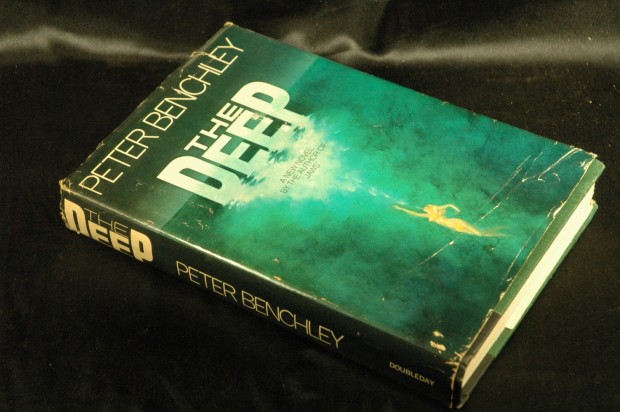
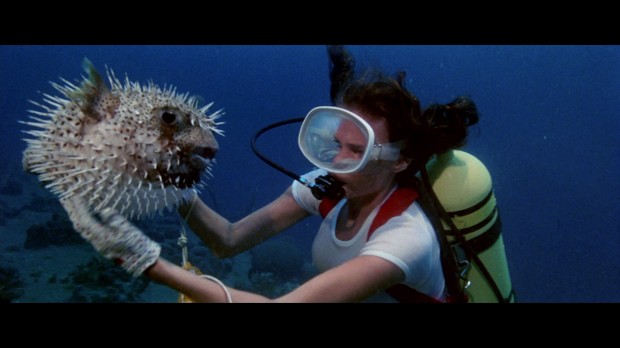
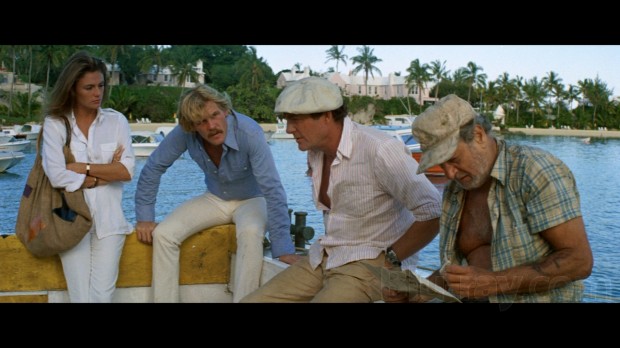
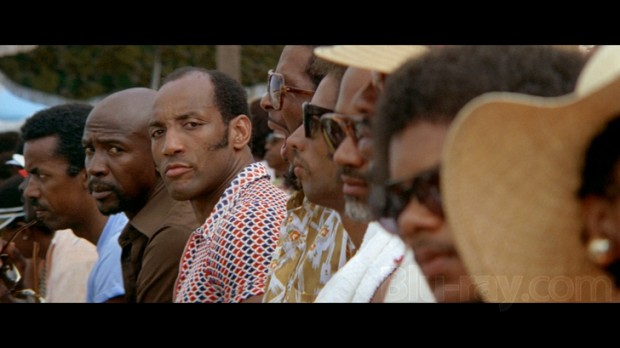

The film’s credits may confirm but I think the van in the chase sequence was provided by Transfer & Storage not Globe Forwarding.
You must read: The Greatest White Shark Story Ever Told!
“My Friend Michale” a true story about the real Jaws.
My husband and his friends had a ball in their hey day – mixing with cast and crew during the making of the film…. The stories still come out to be retold, and mention of Bisset promotes a big sigh!
Helped build the underwater set that summer…met the producers but not the stars^^